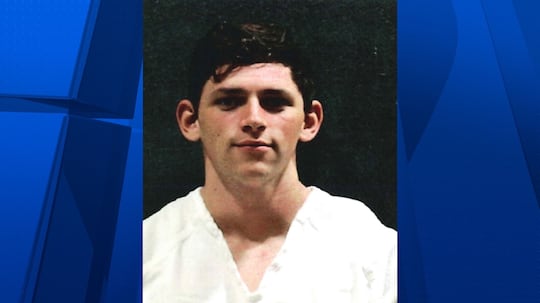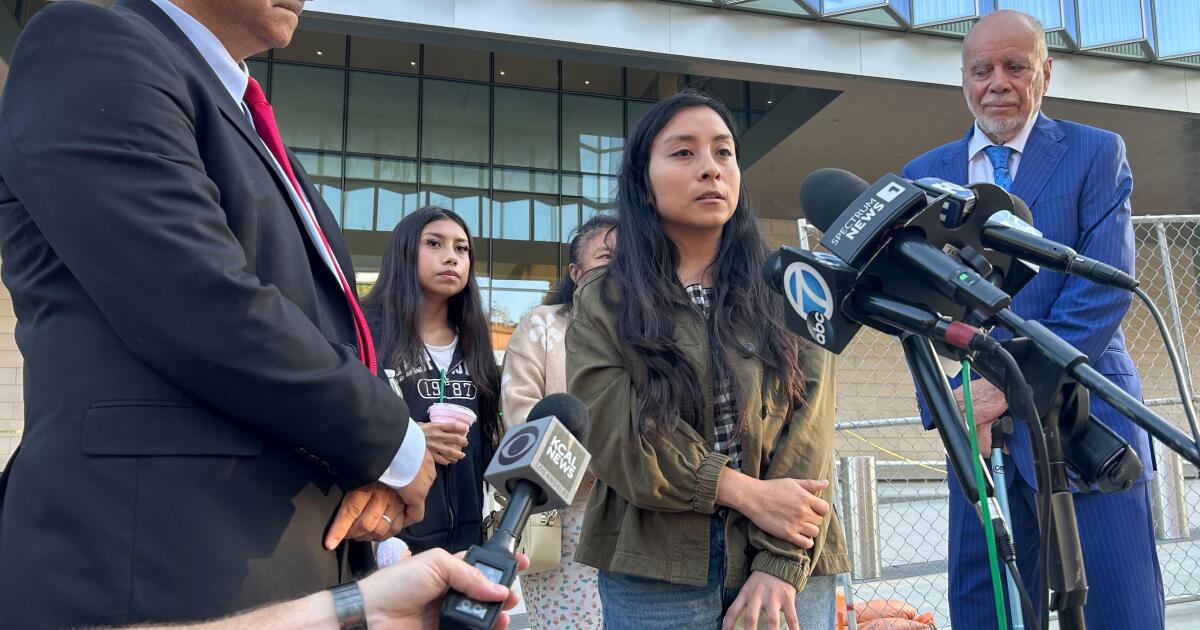Arizona
1864 near-total abortion ban in Arizona officially repealed

PHOENIX (AZFamily/AP) — Arizona’s Civil War-era abortion ban is officially off the books.
In April, the Arizona Supreme Court decided to let the state enforce the long-dormant 1864 law that criminalized all abortions except when a woman’s life was jeopardized. Then, state lawmakers voted on a bill to repeal that law once and for all.
Democratic Arizona Gov. Katie Hobbs signed the bill in May, declaring it was just the beginning of a fight to protect reproductive health care in Arizona.
“When the Supreme Court reinstated Arizona’s 1864 total abortion ban, I called it a dark day for our state because I knew that ban would strip away our freedoms and endanger the lives of countless women. I saw a world where my daughter had fewer rights than I did at her age. And I committed to not rest until I had repealed the total abortion ban,” Hobbs said in a statement.
Abortion has sharply defined Arizona’s political arena since the U.S. Supreme Court overturned Roe v. Wade in 2022. As the November general election approaches, it will be up to Arizona voters to decide whether to enshrine the right to abortion in the state constitution.
The road to repeal
After the state Supreme Court cleared the way for enforcement, Hobbs urged the state Legislature to take immediate action to undo the ban before it went into effect. Republican lawmakers, who hold a narrow majority in both chambers, derailed discussions about repealing the ban. At one point, the roadblocks resulted in chants of “Shame! Shame!” by outraged Democratic colleagues.
Emotions on the House floor and in the gallery ran high as House Democrats garnered the support of three Republicans to pass the repeal legislation two weeks later, sending it to the Senate for consideration. Two GOP senators joined with Democrats a week later to grant final approval.
The battle in Arizona made national headlines again when Democratic state Sen. Eva Burch told fellow lawmakers in a floor speech in March that she was going to get an abortion because her pregnancy was no longer viable. In an interview, she said it was her chance to highlight that the laws passed by legislators in Arizona “actually do impact people in practice and not just in theory.”
Arizona’s abortion measure, presidential race likely to boost young voter turnout
Current law
With the territorial ban no longer in play, Arizona law allows abortions until 15 weeks. After that, there is an exception to save the life of the mother, but missing are exceptions for cases of rape or incest after the 15-week mark.
Arizona requires those seeking an abortion before the 15-week mark to have an ultrasound at least 24 hours before the procedure and to be given the opportunity to view it. Minors must have either parental consent or authorization from a state judge, except in cases of incest or when their life is at risk.
Abortion medication can only be provided through a qualified physician, and only licensed physicians can perform surgical abortions. Abortion providers and clinics also must record and report certain information about the abortions they perform to the Department of Health Services.
Voters will decide
Voters will have the ultimate say on whether to add the right to an abortion to the state constitution when they cast their ballots in the general election.
Arizona for Abortion Access, the coalition leading the ballot measure campaign, was successful in securing the measure’s spot on the ballot. The Arizona Secretary of State verified that 577,971 signatures were collected as part of the citizen-led campaign, well over the 383,923 required from registered voters.
If voters approve the measure, abortions would be allowed until fetal viability — the point at which a fetus could survive outside the womb, typically around 24 weeks. It also would allow abortions after that time in cases where the mother’s physical or mental health is in jeopardy.
See a spelling or grammatical error in our story? Please click here to report it.
Do you have a photo or video of a breaking news story? Send it to us here with a brief description.
Copyright 2024 KTVK/KPHO. All rights reserved.

Arizona
Arizona Lottery Pick 3, Fantasy 5 results for Dec. 11, 2025

Odds of winning the Powerball and Mega Millions are NOT in your favor
Odds of hitting the jackpot in Mega Millions or Powerball are around 1-in-292 million. Here are things that you’re more likely to land than big bucks.
The Arizona Lottery offers multiple draw games for those aiming to win big. Here’s a look at Thursday, Dec. 11, 2025 results for each game:
Winning Pick 3 numbers
5-2-5
Check Pick 3 payouts and previous drawings here.
Winning Fantasy 5 numbers
08-10-23-28-33
Check Fantasy 5 payouts and previous drawings here.
Winning Triple Twist numbers
04-14-19-36-37-38
Check Triple Twist payouts and previous drawings here.
Feeling lucky? Explore the latest lottery news and results
What time is the Powerball drawing?
Powerball drawings are at 7:59 p.m. Arizona time on Mondays, Wednesdays and Saturdays.
How much is a Powerball lottery ticket today?
In Arizona, Powerball tickets cost $2 per game, according to the Arizona Lottery.
How to play the Powerball
To play, select five numbers from 1 to 69 for the white balls, then select one number from 1 to 26 for the red Powerball.
You can choose your lucky numbers on a play slip or let the lottery terminal randomly pick your numbers.
To win, match one of the 9 Ways to Win:
- 5 white balls + 1 red Powerball = Grand prize.
- 5 white balls = $1 million.
- 4 white balls + 1 red Powerball = $50,000.
- 4 white balls = $100.
- 3 white balls + 1 red Powerball = $100.
- 3 white balls = $7.
- 2 white balls + 1 red Powerball = $7.
- 1 white ball + 1 red Powerball = $4.
- 1 red Powerball = $4.
There’s a chance to have your winnings increased two, three, four, five and 10 times through the Power Play for an additional $1 per play. Players can multiply non-jackpot wins up to 10 times when the jackpot is $150 million or less.
Are you a winner? Here’s how to claim your lottery prize
All Arizona Lottery retailers will redeem prizes up to $100 and may redeem winnings up to $599. For prizes over $599, winners can submit winning tickets through the mail or in person at Arizona Lottery offices. By mail, send a winner claim form, winning lottery ticket and a copy of a government-issued ID to P.O. Box 2913, Phoenix, AZ 85062.
To submit in person, sign the back of your ticket, fill out a winner claim form and deliver the form, along with the ticket and government-issued ID to any of these locations:
Phoenix Arizona Lottery Office: 4740 E. University Drive, Phoenix, AZ 85034, 480-921-4400. Hours: 7:30 a.m. to 5 p.m. Monday through Friday, closed holidays. This office can cash prizes of any amount.
Tucson Arizona Lottery Office: 2955 E. Grant Road, Tucson, AZ 85716, 520-628-5107. Hours: 7:30 a.m. to 5 p.m. Monday through Friday, closed holidays. This office can cash prizes of any amount.
Phoenix Sky Harbor Lottery Office: Terminal 4 Baggage Claim, 3400 E. Sky Harbor Blvd., Phoenix, AZ 85034, 480-921-4424. Hours: 8:30 a.m. to 5 p.m. Monday through Sunday, closed holidays. This office can cash prizes up to $49,999.
Kingman Arizona Lottery Office: Inside Walmart, 3396 Stockton Hill Road, Kingman, AZ 86409, 928-753-8808. Hours: 8 a.m. to 8 p.m. Monday through Friday, 8:30 a.m. to 5 p.m. Saturday and Sunday, closed holidays. This office can cash prizes up to $49,999.
Check previous winning numbers and payouts at https://www.arizonalottery.com/.
Winning lottery numbers are sponsored by Jackpocket, the official digital lottery courier of the USA TODAY Network.
Where can you buy Arizona lottery tickets?
Tickets can be purchased in person at gas stations, convenience stores and grocery stores. Some airport terminals may also sell lottery tickets.
You can also order tickets online through Jackpocket, the official digital lottery courier of the USA TODAY Network, in these U.S. states and territories: Arizona, Arkansas, Colorado, Idaho, Maine, Massachusetts, Minnesota, Montana, Nebraska, New Hampshire, New Jersey, New York, Ohio, Oregon, Puerto Rico, Washington D.C., and West Virginia. The Jackpocket app allows you to pick your lottery game and numbers, place your order, see your ticket and collect your winnings all using your phone or home computer.
Jackpocket is the official digital lottery courier of the USA TODAY Network. Gannett may earn revenue for audience referrals to Jackpocket services. GAMBLING PROBLEM? CALL 1-800-GAMBLER, Call 877-8-HOPENY/text HOPENY (467369) (NY). 18+ (19+ in NE, 21+ in AZ). Physically present where Jackpocket operates. Jackpocket is not affiliated with any State Lottery. Eligibility Restrictions apply. Void where prohibited. Terms: jackpocket.com/tos.
This results page was generated automatically using information from TinBu and a template written and reviewed by an Arizona Republic editor. You can send feedback using this form.
Arizona
Fruit-flavored cocaine being sold to young people, Arizona official warns

PHOENIX (AZFamily) — Arizona’s attorney general is sounding the alarm over a new illegal drug being marketed toward kids and young women.
The Attorney General’s Office says law enforcement agencies in Arizona are seeing an increase of fruit-flavored cocaine in the illegal drug market.
Attorney General Kris Mayes says dealers are marketing the flavored drug toward younger people and women, attempting to lure new users to using cocaine.
Mayes said the drug is being sold in flavors like piña colada, strawberry, coconut and banana, which may appeal to children. She added that illegal drugs like cocaine often contain the deadly drug fentanyl.
“We want everyone to stay safe and avoid the harms that come from using illegal drugs,” Mayes said.
The warning from the AG’s office comes after a man was sentenced in Pima County last month for selling fruit-flavored cocaine.
A release from Mayes’ office says that on July 17, Jaden Alfredo Covarrubias sold about 1.55 pounds of cocaine to another person after advertising his access to coconut, strawberry and banana flavored forms. Mayes said Covarrubias offered to sell the drugs on social media platforms like WhatsApp.
Covarrubias was sentenced on Nov. 24 to 1.75 years in prison. He was ordered to pay $4,500 to the State Anti-Racketeering Revolving Fund and $300 for investigative costs to the Arizona Department of Public Safety.
See a spelling or grammatical error in our story? Please click here to report it.
Do you have a photo or video of a breaking news story? Send it to us here with a brief description.
Copyright 2025 KTVK/KPHO. All rights reserved.
Arizona
Volunteer pilots bring Santa, gifts to Title I schools on Utah-Arizona border

COLORADO CITY, Ariz. — Santa Claus traded his sleigh for small planes Wednesday as 20 volunteer pilots from Angel Flight West’s Utah wing flew hundreds of miles to deliver Christmas gifts and school supplies to two Title I schools on the Utah-Arizona border.
The annual “Santa Flight” brought toys, winter coats, backpacks and more than 500 books donated by PBS Utah to about 500 students from Water Canyon Elementary in Hildale, Utah, and Cottonwood Elementary in Colorado City, Arizona. The schools gathered at the Colorado City airport to greet Santa, Mrs. Claus, some elves and the pilots.
“Well, this is just excitement,” said Brad Jolley, principal at Water Canyon Elementary in Hildale. “I mean, you look at the faces of the kids, you see smiles, and just a great opportunity, great atmosphere.”
“This is the first time that our two schools in our valley have come together and done an activity,” said Natalie Hammon, principal at Cottonwood Elementary in Colorado City. “So Santa Flight has really helped us unite our valley and let our two schools work together for a great cause.”
The donations were made possible by community groups and sponsors, including the John C. Kish Foundation, Bank of Utah and the Leavitt Group. Lou Rossi, Utah Wing leader for Angel Flight West, said the effort reflects the generosity of pilots and donors during a tough economic time.
Angel Flight West is best known for providing free air transportation for patients traveling long distances for medical care. Volunteer pilot Steve Booth said the holiday mission is just one way to give back.
“For somebody that might need a four- or five-hour car ride after a cancer treatment, a 45 (-minute) or one-hour flight just makes a huge, huge difference in their life,” Booth said.
The Santa Flight tradition began in 2000 and rotates among rural schools each year.
The Key Takeaways for this article were generated with the assistance of large language models and reviewed by our editorial team. The article, itself, is solely human-written.
-

 Alaska6 days ago
Alaska6 days agoHowling Mat-Su winds leave thousands without power
-

 Politics1 week ago
Politics1 week agoTrump rips Somali community as federal agents reportedly eye Minnesota enforcement sweep
-
Ohio1 week ago
Who do the Ohio State Buckeyes hire as the next offensive coordinator?
-

 Texas6 days ago
Texas6 days agoTexas Tech football vs BYU live updates, start time, TV channel for Big 12 title
-

 News1 week ago
News1 week agoTrump threatens strikes on any country he claims makes drugs for US
-

 World1 week ago
World1 week agoHonduras election council member accuses colleague of ‘intimidation’
-

 Washington3 days ago
Washington3 days agoLIVE UPDATES: Mudslide, road closures across Western Washington
-

 Iowa5 days ago
Iowa5 days agoMatt Campbell reportedly bringing longtime Iowa State staffer to Penn State as 1st hire


























